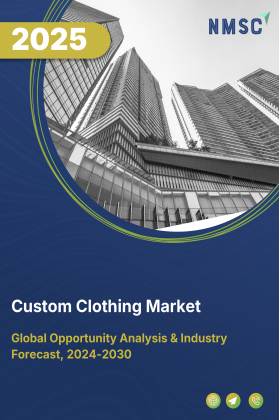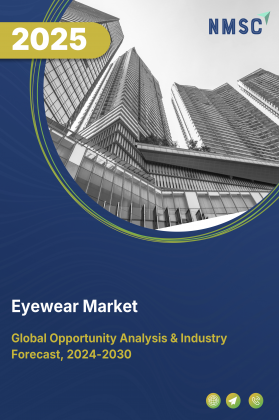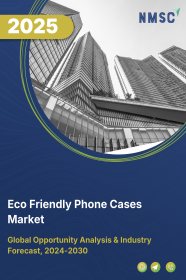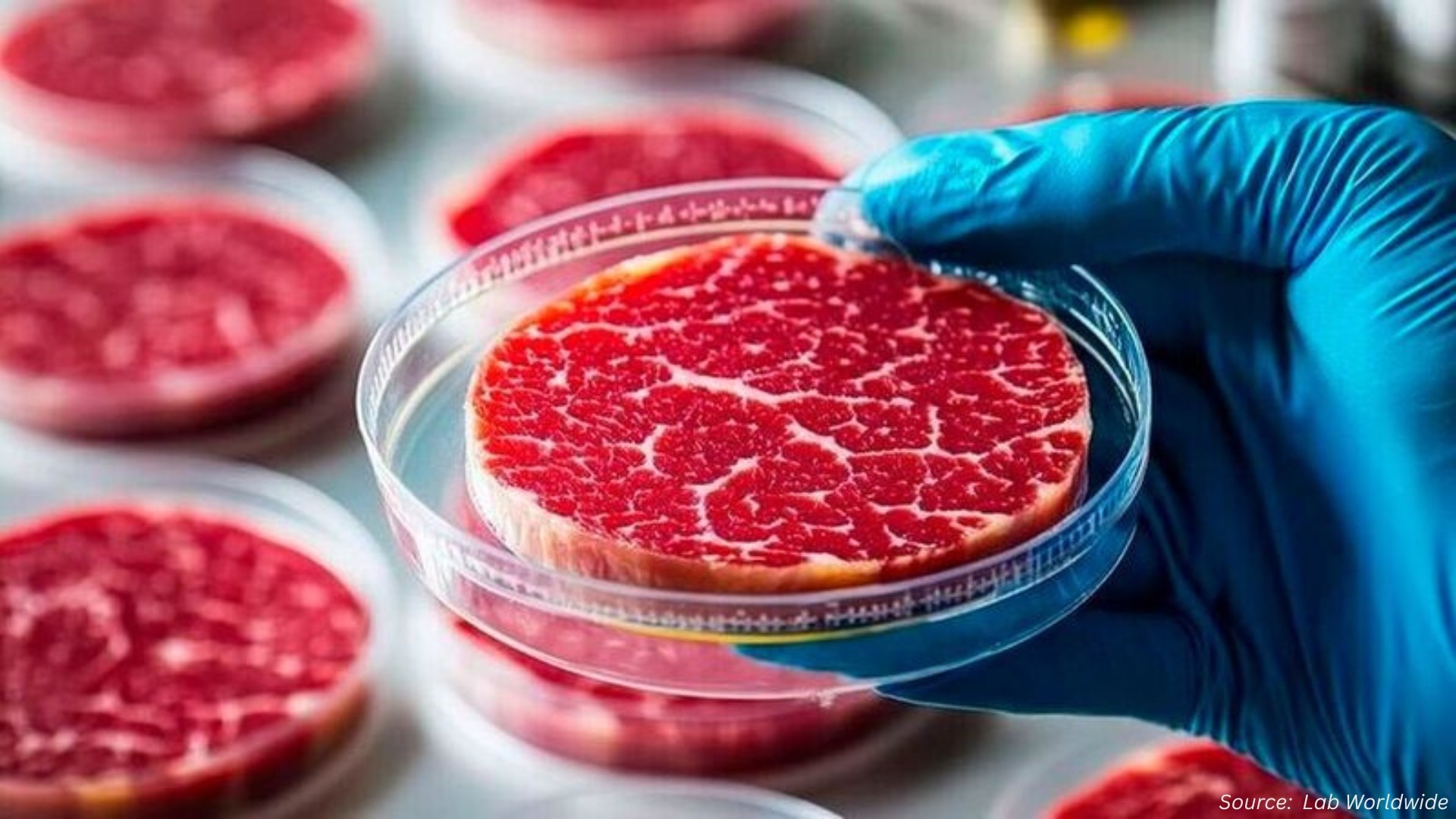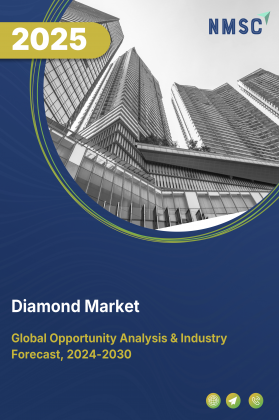
Diamond Market by Type (Natural, Synthetic Lab grown), by Quality Tier (Premium High Grade, Mid Standard Grade, Commercial Low Grade), by Size Tier Carat, by Cut (Round Brilliant Cut Diamond), by Color, by Application (Jewelry and Ornaments [Rings, Necklaces, Earrings, Others], Industrial and Tools [Construction and Mining Tools, Other Industrial Uses]), by Distribution Channel (Branded Retail Stores, Independent Jewelry Stores) – Global Analysis & Forecast, 2025–2030
Industry Outlook
The global Diamond Market size was valued at USD 106.93 billion in 2024, and is expected to be valued at USD 112.49 billion by the end of 2025. The industry is projected to grow, hitting USD 144.94 billion by 2030, with a CAGR of 5.2% between 2025 and 2030.
The diamond market is experiencing rapid transformation, driven by rising disposable incomes, growing urbanization, increasing consumer awareness of luxury and investment value, and demand for ethically sourced and certified diamonds. Globally, demand for high-quality, conflict-free, and customized diamond jewelry is rising sharply, fueled by growth in retail networks, e-commerce platforms, luxury boutiques, and affluent consumer segments. Expansion of online jewelry retail, virtual try-on solutions, and omnichannel shopping experiences further intensifies the need for innovative product designs, personalized services, and marketing strategies. Advancements in lab-grown diamonds, sustainable sourcing, bespoke cuts, digital certification technologies, and luxury packaging are reshaping offerings, enhancing customer experience, and strengthening brand loyalty.
What are the Key Diamond Market Trends?
What are the Major Technological Trends Shaping the Diamond Market?
Technological advancements are significantly influencing the market. Innovations in lab-grown diamond production, advanced cutting and polishing techniques, and digital certification technologies are improving quality, clarity, and authenticity. Automated manufacturing and AI-driven design platforms enable precise customization and scalability, while virtual try-on solutions and AR/VR experiences allow consumers to visualize jewelry before purchase. Blockchain and traceability technologies ensure ethical sourcing, conflict-free certification, and transparency, responding to increasing consumer and regulatory demands.
How is Demographic Change Influencing the Diamond Market?
Demographic and societal shifts are shaping market growth. Rising disposable incomes, urbanization, and expanding middle-class populations in emerging markets are driving diamond jewelry consumption. Younger, tech-savvy consumers are seeking personalized, lab-grown, and ethically sourced diamonds, while mature and affluent populations in developed regions continue to value high-quality, investment-grade stones. These demographic changes are encouraging brands to develop diverse, targeted, and customizable offerings to meet varying consumer needs.
What Role Does Government Support Play in Driving the Diamond Industry Growth?
Government support is a key factor in diamond market expansion. Policies promoting responsible mining, ethical sourcing, and certification standards enhance consumer trust and industry credibility. Incentives for domestic jewelry manufacturing, export promotion programs, and support for MSMEs strengthen competitiveness and innovation. Additionally, regulatory frameworks on import/export duties and consumer protection facilitate a secure, transparent, and sustainable market environment.
How is Consumer Preference Changing in the Diamond Market?
Consumer preferences are evolving rapidly. Modern buyers increasingly favor ethically sourced, lab-grown, and customized diamonds over conventional options. There is a growing emphasis on sustainability, traceability, and unique design, with consumers looking for jewelry that reflects personal values, lifestyle, and social responsibility. Overall, the market is transitioning from traditional luxury offerings to innovative, personalized, and ethically conscious solutions that align with contemporary consumer expectations.
What are the Key Market Drivers, Breakthroughs, and Investment Opportunities that will Shape the Diamond Industry in Next Decade?
The market is witnessing robust growth, driven by increasing urbanization, rising disposable incomes, and greater consumer awareness of luxury, investment value, and ethical sourcing. Demand for premium, customized, and ethically sourced diamonds is rising as consumers seek high-quality, unique, and sustainable jewelry. The expansion of e-commerce platforms, virtual showrooms, and modern retail channels is enhancing accessibility and visibility, enabling brands to reach a wider audience and offer personalized designs and services. At the same time, market growth is restrained by fluctuations in diamond prices and supply chain challenges, which affect production costs and profitability. Opportunities exist in the growing preference for lab-grown, traceable, and environmentally responsible diamonds, encouraging innovation and differentiation in product offerings.
Household disposable income plays a critical role in driving demand for diamonds, particularly in the jewelry and ornaments segment. In 2024–2025, Japan, with a per capita disposable income of USD 67,468, Germany at USD 52,296, and the United Kingdom at USD 47,670, represent markets where consumers have substantial purchasing power. High disposable income in these countries enables consumers to invest in premium and luxury diamonds, including larger carat sizes, high-quality grades, and branded jewelry. Similarly, Canada (USD 47,260) and South Korea (USD 39,965) also exhibit significant purchasing power, supporting growth in both natural and lab-grown diamonds, particularly in mid to premium quality segments. In contrast, countries with relatively lower disposable income tend to drive demand for smaller, commercial-grade diamonds and more affordable synthetic options. Overall, higher disposable income strongly correlates with increased diamond consumption, explaining why developed economies dominate the luxury diamond market while emerging markets focus on accessible and mid-tier segments.
Growth Drivers:
How is Rising Disposable Incomes Driving the Diamond Market Demand?
Increasing disposable incomes, especially in emerging economies and affluent urban centers, are a major driver of the market. As consumers have more financial freedom, they are more willing to invest in luxury and high-value items, including diamonds and diamond jewelry. Higher income levels enable buyers to purchase premium-quality stones, customized designs, and branded collections, which were previously considered unaffordable. This trend is particularly evident among the growing middle class and younger urban professionals who view diamonds not only as a symbol of status and prestige but also as a long-term investment. Consequently, rising disposable incomes are fueling demand across retail channels, driving market expansion, and encouraging brands to innovate with new product lines and personalized offerings.
Urbanization is a significant driver of the market, as higher urban populations increase exposure to luxury goods, branded retail outlets, and modern jewelry trends. In 2024, Germany, with an urban population of 65.05 million, leads the group, followed by the United Kingdom at 58.76 million, and France at 56.21 million, indicating that a majority of their populations reside in urban centers. South Korea and Canada have moderately urbanized populations at 42.17 million and 33.84 million, respectively, while Australia has the lowest urban population among the listed countries at 23.60 million. These urban populations are more likely to purchase diamonds for personal adornment, gifts, and premium occasions, benefiting both natural and lab-grown diamond segments. High urbanization also supports the growth of branded retail stores, e-commerce platforms, and organized distribution channels, making diamonds more accessible to a concentrated consumer base. In contrast, countries with lower urbanization see slower ad
Is Urbanization & Growing Middle Class Accelerating the Market Growth?
Rapid urbanization and the growth of the middle-class population are significant drivers of the market. According to the World Bank, urban populations account for 84% of the total population in the U.S. and 66% in China, highlighting the scale of urban concentration in key markets. As more consumers move to cities, they gain better access to modern retail infrastructure, luxury stores, and e-commerce platforms, increasing exposure to diamond jewelry. Urban lifestyles also encourage aspirational purchasing, with diamonds viewed as symbols of status, success, and sophistication. The expanding middle class, coupled with rising disposable incomes, is increasingly able to afford premium and branded diamond products. This demographic shift is driving demand for a wide range of offerings, including customized designs, smaller-stone jewelry, and entry-level luxury pieces, enabling brands to reach a broader audience and strengthen market penetration.
E-commerce is an increasingly important driver of the market, as it expands consumer access to both natural and lab-grown diamonds, particularly in regions where physical retail presence be limited. In 2025, China dominates global e-commerce with a 52.1% share, followed by the USA at 20.1%, while the UK and Japan account for 3.4% and 3.3%, respectively. South Korea, Germany, and France hold smaller shares of 2.5%, 1.7%, and 1.4%, with the remaining countries collectively representing 15.5%. The high penetration of e-commerce in China and the USA facilitates convenient online purchases of diamonds, including certified jewelry and customized options, and also allows brands to reach younger, tech-savvy consumers. Although Europe and other regions have smaller e-commerce shares, the growing adoption of online platforms supports the expansion of branded retail, digital marketing, and personalized diamond offerings, making e-commerce a key enabler of global diamond market growth.
Growth Inhibitors:
How does Price Volatility and Supply Chain Challenges Limit the Diamond Market Expansion?
One of the major restraints of the market is the fluctuation in diamond prices and the complexities of the supply chain. Natural diamond prices are influenced by global economic conditions, geopolitical tensions, and mining output, leading to unpredictability in production and retail costs. Additionally, challenges in sourcing ethically certified or conflict-free diamonds disrupt supply and limit availability. These factors increase production costs, affect profit margins for manufacturers and retailers, and make diamonds less accessible to certain consumer segments. Consequently, price volatility and supply chain uncertainties act as a significant constraint on market growth, especially in markets where affordability and consistent availability are critical for demand expansion.
How is Growing Demand for Lab-Grown and Sustainable Diamonds Creating Opportunity for the Market?
A major opportunity in the market lies in the rising consumer preference for lab-grown and ethically sourced diamonds. As awareness of environmental impact and ethical sourcing increases, consumers are increasingly seeking sustainable alternatives that are conflict-free and environmentally responsible. Lab-grown diamonds offer high-quality, customizable, and cost-effective options, making them attractive to younger, tech-savvy, and socially conscious buyers. This trend allows brands to innovate with unique designs, promote transparency, and tap into a growing segment of eco-conscious consumers, thereby expanding market reach and creating new revenue streams.
How Diamond Market is Segmented in this Report, and What are the Key Insights from the Segmentation Analysis?
By Type Insights
Which Type Is Expected to Drive the Diamond Market in 2025?
On the basis of type, the market is segmented into Natural and Synthetic Lab grown. The market in 2025 is expected to be primarily driven by Natural diamonds. Natural diamonds continue to dominate consumer preference due to their perceived value, rarity, heritage appeal, and long-standing cultural significance in jewelry, gifting, and luxury markets. They are highly favored for premium and high-end jewelry segments, especially for occasions such as weddings and engagements, where authenticity and traditional appeal are critical.
While Synthetic Lab grown diamonds are gaining traction owing to affordability, ethical sourcing, and eco-friendly positioning, Natural diamonds remain the backbone of the market. Additionally, Synthetic diamonds are emerging as a high-potential category, driven by increasing consumer awareness of sustainability, cost-effectiveness, and availability of larger carat sizes at lower price points.
By Quality Tier Insights
Which Quality Tier Is Likely to Lead the Diamond Market in 2025?
On the basis of quality tier, the market is segmented into Premium High Grade, Mid Standard Grade, and Commercial Low Grade. The market in 2025 is expected to be primarily driven by Premium High-Grade diamonds. These diamonds continue to dominate consumer preference due to their superior clarity, color, cut, and overall aesthetic appeal, making them highly desirable for high-end jewelry, luxury collections, and investment purposes. Premium diamonds are particularly favored in engagement rings, designer collections, and branded jewelry segments where quality and prestige are paramount.
While Mid Standard Grade and Commercial Low-Grade diamonds are gaining popularity owing to affordability and accessibility for mass-market consumers, Premium High-Grade diamonds remain the backbone of the market. Additionally, Mid Standard Grade diamonds are emerging as a growth segment, supported by increasing consumer interest in value-for-money options without compromising significantly on quality.
By Size Tier Carat Insights
Which Diamond Size Is Gaining the Most Attention in 2025?
On the basis of size tier, the market is segmented into Less than 1 Carat, 1 to 2 Carat, 2 to 5 Carat, and Greater than 5 Carat. The market in 2025 is expected to be primarily influenced by diamonds in the Less than 1 Carat range. These smaller diamonds are preferred by consumers due to their affordability, adaptability in a variety of jewelry designs, and practicality for everyday use. They are especially popular in engagement rings, earrings, and pendants, where a balance of elegance and cost-effectiveness is sought.
While diamonds in the 1 to 2 Carat, 2 to 5 Carat, and Greater than 5 Carat ranges are attracting interest among luxury buyers and for special occasion jewelry, Less than 1 Carat diamonds continue to form the largest segment of the market. The 1 to 2 Carat segment is also emerging as a fast-growing category, driven by demand for statement pieces and premium gifting options.
By Cut Insights
Which Diamond Cut Is Most Preferred by Consumers in 2025?
On the basis of cut, the market is segmented into Round Brilliant Cut, Princess Cut, Emerald Cut, Radiant Cut, Cushion Cut, Oval Cut, Asscher Cut, Marquise Cut, Pear Cut, and Heart Cut diamonds. The market in 2025 is expected to be primarily driven by Round Brilliant Cut diamonds. This cut continues to dominate consumer preference due to its exceptional brilliance, versatility in various jewelry designs, and timeless appeal, making it the most popular choice for engagement rings, earrings, and pendants.
While other cuts such as Princess, Emerald, Cushion, and Oval are gaining traction for their unique aesthetics and modern designs, Round Brilliant Cut diamonds remain the backbone of the market. Additionally, specialty cuts like Heart and Marquise are emerging as niche segments, driven by personalized jewelry trends and demand for distinctive statement pieces.
By Color Insights
Which Diamond Color Grade Is Capturing Maximum Demand in 2025?
On the basis of color, the market is segmented into Colorless (Grade D E F), Near Colorless (Grade G H I J), Faint (K L M), Very Light (Grade N O P Q R), and Light (Grade S T U V W X Y Z) diamonds. The market in 2025 is expected to be primarily driven by Colorless diamonds. These diamonds continue to dominate consumer preference due to their unmatched brilliance, purity, and premium appeal, making them highly sought after for engagement rings, luxury jewelry collections, and high-end gifting occasions.
While Near Colorless and Faint diamonds are gaining popularity for offering a balance between quality and affordability, Colorless diamonds remain the backbone of the market. Additionally, Very Light and Light diamonds are emerging as niche segments, appealing to consumers seeking unique or customized jewelry pieces at accessible price points.
By Application Insights
Which Application Segment Is Driving the Diamond Market in 2025?
On the basis of application, the market is segmented into Jewelry and Ornaments, and Industrial and Tools. The market in 2025 is expected to be primarily driven by the Jewelry and Ornaments segment. This segment continues to dominate due to the strong demand for engagement rings, necklaces, earrings, and other decorative pieces, where diamonds are valued for their aesthetic appeal, rarity, and symbolic significance. Jewelry remains the largest contributor to revenue, supported by cultural traditions, gifting occasions, and increasing consumer preference for premium and branded collections.
While the Industrial and Tools segment is gaining traction due to the use of diamonds in construction, electronics, semiconductors, automotive, and other precision applications, Jewelry and Ornaments remain the backbone of the market. Additionally, the Industrial segment is emerging as a high-potential category, driven by the growing adoption of synthetic diamonds for cost-effective and durable industrial solutions.
By Distribution Channel Insights
Which Distribution Channel Is Leading Diamond Sales in 2025?
On the basis of distribution channel, the market is segmented into Branded Retail Stores, Independent Jewelry Stores, Online E Commerce, and Wholesale B2B Supply. The market in 2025 is expected to be primarily driven by Branded Retail Stores. These stores continue to dominate consumer preference due to their trusted reputation, wide product variety, certified diamonds, and premium in-store experience, making them the preferred choice for high-value purchases such as engagement rings and luxury jewelry.
While Independent Jewelry Stores and Online E Commerce are gaining traction due to competitive pricing, convenience, and expanding digital platforms, Branded Retail Stores remain the backbone of the market. Additionally, Wholesale B2B Supply is emerging as a growth segment, driven by demand from small retailers, designers, and bulk buyers seeking cost-effective procurement solutions.
Regional Outlook
The market is geographically studied across North America, Europe, Asia Pacific, and the Middle East & Africa, and each region is further studied across countries.
Diamond Market in North America
The North American Market is being driven by rising disposable incomes, increasing urbanization, and growing consumer awareness of luxury, investment value, and ethical sourcing. Expanding retail networks, including jewelry stores, luxury boutiques, and e-commerce platforms, are enhancing product accessibility and visibility. Urban populations are seeking customized, premium, and ethically sourced diamonds, while the trend toward sustainable and lab-grown options is creating additional growth opportunities for manufacturers and retailers across the region.
Diamond Market in the United States
In the U.S., market growth is primarily fueled by the rising adoption of high-quality, customized, and ethically sourced diamonds. Affluent and younger consumers are increasingly looking for unique designs, lab-grown options, and traceable stones that align with sustainability and social responsibility values. The expansion of organized retail, online platforms, and virtual showrooms allows brands to reach diverse consumer segments, while innovative designs, digital certification, and luxury packaging are enabling differentiation and brand loyalty.
Diamond Market in Canada
In Canada, demand for diamond jewelry is being driven by urbanization, higher disposable incomes, and increasing awareness of ethical sourcing and investment value. Consumers prefer diamonds that are conflict-free, customizable, and of high clarity and cut quality. E-commerce and modern retail channels are expanding market reach, while growing interest in sustainable and lab-grown diamonds encourages manufacturers and retailers to innovate in product offerings and marketing strategies.
Diamond Market in Europe
The European Market is supported by strong consumer focus on luxury, sustainability, and ethical sourcing. Consumers are increasingly adopting premium, customizable, and traceable diamonds, including lab-grown alternatives. Retail modernization, growth of online jewelry platforms, and sustainability trends are driving product visibility and accessibility. The market is also witnessing innovation in bespoke designs, certification technologies, and environmentally responsible packaging, creating opportunities for brands to cater to diverse consumer preferences across countries.
Diamond Market in the United Kingdom
In the U.K., the market is primarily driven by growing consumer interest in luxury, ethical sourcing, and investment-grade diamonds. Urban populations and rising disposable incomes are fueling demand for premium, customized, and lab-grown diamonds, while increasing awareness of sustainability and traceability shapes purchasing preferences. The expansion of modern retail chains, e-commerce platforms, and virtual showrooms is improving accessibility and visibility, enabling consumers to explore a wider variety of diamond offerings. Additionally, regulatory support for ethical sourcing and certification further strengthens consumer confidence, contributing to steady market growth across the country.
Diamond Market in Germany
Germany’s market is primarily driven by consumers’ preference for premium, high-quality, and ethically sourced diamonds, coupled with strong awareness of luxury, investment value, and sustainability. Urban populations with higher disposable incomes are increasingly seeking customized, lab-grown, and traceable diamonds. The expansion of modern retail outlets, jewelry boutiques, and e-commerce platforms enhances accessibility, while growing interest in sustainable and conflict-free diamonds supports steady market growth.
Diamond Market in France
In France, market growth is fueled by urbanization and rising consumer awareness of luxury and ethical sourcing. Consumers are increasingly adopting premium, bespoke, and lab-grown diamonds with a focus on quality, traceability, and investment value. Modern retail channels, including jewelry stores, luxury boutiques, and online platforms, are improving product visibility and availability. Demand for ethically sourced, high-quality diamonds is further supported by consumer preference for sustainability and socially responsible purchasing.
Diamond Market in Spain
Spain’s market is significantly influenced by urbanization and growing disposable incomes, which expand access to modern retail stores and online shopping platforms. Urban consumers are showing strong preference for premium, customized, and ethically sourced diamonds, creating opportunities for brands to innovate in design, personalization, and packaging. Sustainability trends and interest in lab-grown, traceable stones further drive market growth.
Diamond Market in Italy
Italy’s market growth is driven by increasing awareness of luxury, sustainability, and investment-grade diamonds, along with a strong demand for premium and bespoke designs. Consumers are increasingly seeking diamonds with ethical sourcing, unique cuts, and high clarity. Urbanization and rising disposable incomes support market expansion, while the growth of modern retail and e-commerce channels enhances accessibility. Rising interest in sustainable and eco-friendly diamonds provides opportunities for product differentiation and brand loyalty.
Diamond Market in the Nordics
In the Nordic countries, the market is primarily driven by high consumer awareness of luxury, ethical sourcing, and sustainability. Urban populations with higher disposable incomes are seeking premium, customizable, and lab-grown diamonds. The market is strongly influenced by trends toward conflict-free and environmentally responsible diamonds, while modern retail chains, luxury boutiques, and online platforms provide greater accessibility and visibility. Consumers increasingly prefer diamonds that combine investment value, design, and ethical responsibility, supporting steady market growth.
Diamond Market in Asia Pacific
The market in Asia Pacific is fueled by rapid urbanization, rising disposable incomes, and growing consumer awareness of luxury and investment-grade diamonds. Countries such as India, China, South Korea, and Australia are witnessing strong demand for premium, customized, and ethically sourced diamonds driven by expanding urban populations and lifestyle changes. The growth of modern retail outlets, jewelry boutiques, and online platforms is increasing accessibility, while consumers are increasingly opting for lab-grown, traceable, and sustainable diamonds. Rising awareness of ethical sourcing, luxury trends, and investment value is creating significant opportunities for product innovation and market expansion.
Diamond Market in China
China’s market growth is primarily driven by urbanization, rising disposable incomes, and increasing demand for premium, customized, and ethically sourced diamonds. Consumers are seeking high-quality, lab-grown, and traceable stones, supported by strong awareness of luxury, investment value, and sustainability. The expansion of e-commerce platforms and modern jewelry retail chains enhances product availability, while growing interest in ethical and environmentally responsible diamonds fosters brand differentiation and market development.
Diamond Market in Japan
Japan’s diamond market is influenced by aging populations, high luxury awareness, and a preference for premium and investment-grade jewelry. Consumers increasingly prefer high-quality, conflict-free, and lab-grown diamonds that cater to ethical and aesthetic standards. Availability through jewelry boutiques, department stores, and online platforms supports accessibility, while sustainability trends and certified sourcing encourage innovation and product differentiation.
Diamond Market in India
In India, the market is being significantly driven by rapid urbanization, rising disposable incomes, and growing consumer awareness of luxury, ethical sourcing, and investment value. According to the World Bank, India’s urban population is approximately 534.91 million, highlighting the concentration of potential buyers in cities. This demographic shift, combined with increasing interest in premium and customizable diamonds, is boosting demand for lab-grown, traceable, and ethically sourced stones. Expansion of modern retail outlets, jewelry boutiques, and e-commerce platforms, along with a focus on sustainability and eco-friendly practices, is creating strong opportunities for product innovation and market growth across urban centers.
Diamond Market in South Korea
In South Korea, the market is primarily driven by urbanization, rising disposable incomes, and increasing consumer awareness of luxury and ethical sourcing. Urban populations are increasingly seeking premium, lab-grown, and customizable diamonds. Growing demand for traceable, environmentally responsible diamonds, along with widespread availability through modern retail chains and online platforms, supports consistent market growth and encourages innovation in product designs, certification, and marketing.
Diamond Market in Taiwan
Taiwan’s market growth is fueled by health-conscious and luxury-oriented consumers who prefer premium, lab-grown, and ethically sourced diamonds. Expansion of urban areas, higher disposable incomes, and exposure to global luxury trends are driving adoption of high-quality, traceable, and sustainable diamonds. Modern retail chains and e-commerce platforms improve accessibility, while trends toward environmentally responsible and conflict-free stones create opportunities for product differentiation and innovation.
Diamond Market in Indonesia
In Indonesia, the market is being driven by rapid urbanization, growing middle-class populations, and increasing awareness of luxury, investment value, and ethical sourcing. Consumers are demanding premium, customizable, and lab-grown diamonds, while e-commerce and modern retail channels improve accessibility and variety. Rising interest in traceable, conflict-free, and environmentally responsible diamonds encourages brands to innovate in design, certification, and marketing, creating strong growth prospects across urban and semi-urban markets.
Diamond Market in Australia
Australia’s diamond market is supported by urbanization, rising disposable incomes, and growing preference for premium and ethically sourced diamonds. Urban consumers increasingly seek lab-grown, traceable, and customizable diamonds that offer luxury, aesthetic appeal, and investment value. The expansion of modern retail outlets, jewelry boutiques, and online platforms enhances product visibility, while sustainability trends and ethical sourcing drive demand for conflict-free and environmentally responsible diamonds, fostering innovation and market growth across the country.
Diamond Market in Latin America
In Latin America, the diamond market is primarily driven by rapid urbanization, rising disposable incomes, and increasing awareness of luxury, investment, and ethical sourcing. Growing urban populations in countries such as Brazil, Mexico, and Argentina are fueling demand for premium, customized, and traceable diamonds. Expansion of modern retail outlets, jewelry boutiques, and e-commerce platforms enhances accessibility and product visibility, while consumer preference for lab-grown and environmentally responsible diamonds encourages innovation and market growth across metropolitan and semi-urban areas.
Diamond Market in the Middle East & Africa
In the Middle East and Africa, market growth is supported by urbanization, rising disposable incomes, and increasing adoption of luxury and ethically sourced diamonds. Consumers are seeking premium, customizable, and lab-grown diamonds, with a growing focus on traceable and conflict-free sourcing. The expansion of retail channels, including jewelry stores, luxury boutiques, and online platforms, improves product availability, while the demand for sustainable and environmentally responsible diamonds presents opportunities for differentiation and innovation, driving steady growth across the region.
Competitive Landscape
Which Companies Dominate the Diamond Market and How Do They Compete?
The global diamond market is dominated by established multinational manufacturers and regional players such as De Beers, Kiran Gems, Hare Krishna Exports, Sheetal.Co, Asian Star, Kira Lab-Grown Diamonds, Banderi, Riddhi Corporation, Shree Ramkrishna Exports (SRK), Rosy Blue, Rehs Diamonds, Shimansky Jewelry, JB Brothers, Karp Impex, and Venus Jewels. These companies compete by offering a wide range of natural and lab-grown diamonds across rough, polished, certified, and bespoke segments, catering to diverse demand from jewelry, industrial, and investment markets worldwide.
Market leaders differentiate themselves through advanced cutting and polishing technology, traceability and ethical sourcing initiatives, large-scale supply networks, and partnerships with retailers and jewelers. Strategies also focus on branding, marketing campaigns, global distribution, and investment in sustainable and lab-grown alternatives to meet evolving consumer preferences. Regional specialists and niche players compete by offering customized cuts, high-quality grading, or region-specific diamond assortments, targeting particular markets and customer bases. As demand grows for sustainable, ethically sourced, and lab-grown diamonds, companies that combine technological innovation, supply chain transparency, and operational efficiency are capturing market share and building strong long-term partnerships in the diamond market.
Market dominated by Diamond Market Giants and Specialists
The diamond market is split between large multinational manufacturers and regional or niche players. Large companies compete on scale, brand recognition, extensive distribution networks, and broad product portfolios, offering a wide range of diamonds from classic investment-grade stones to premium and customized jewelry. Smaller or specialist providers focus on lab-grown, ethically sourced, or bespoke diamonds, catering to specific consumer preferences, local markets, or premium segments. This creates a dual market structure where consumers either choose well-established brands for reliability and variety or opt for specialized products that meet unique design, ethical, or sustainability requirements.
Innovation and Adaptability Drive Market Success
Market leaders are investing in innovative designs, sustainable sourcing, and advanced production and certification technologies to enhance product quality, authenticity, and consumer appeal. Companies are developing lab-grown diamonds, traceable and conflict-free stones, customizable cuts, and eco-friendly packaging to meet evolving consumer preferences. Brands that adapt to trends like personalization, ethical sourcing, and luxury-focused offerings are securing stronger market presence and loyalty. Continuous innovation in design, certification, packaging, and ethical practices is key to maintaining competitive advantage.
Market Players to Opt for Merger & Acquisition Strategies to Expand Their Presence
Mergers and acquisitions have become a strategy for diamond companies to expand product portfolios, enter new geographic markets, and acquire specialized design or production capabilities. Leading manufacturers are acquiring regional or niche diamond brands to strengthen market share, diversify offerings, and integrate advanced manufacturing and certification technologies. These M&A activities enable companies to reach new consumer segments, scale operations, and respond effectively to growing demand for premium, customizable, and ethically sourced diamonds, while enhancing their competitive positioning in both mass-market and specialty categories.
List of Key Diamond Companies
-
De Beers
-
Kiran Gems
-
Hare Krishna Exports
-
Sheetal.Co
-
Asian Star
-
Kira Lab- Grown Diamonds
-
Riddhi Corporation
-
Shree Ramkrishna Exports (SRK)
-
Rosy Blue
-
Rehs Diamonds
-
Shimansky Jewely
-
JB Brothers
-
Karp Impex
-
Venus Jewels
What are the Latest Key Industry Developments?
-
August 2025 - De Beers discovered a kimberlite field in Angola (first such find in ~30 years) in joint venture with Endiama.
-
February 2025 - Botswana secured an improved 10-year diamond sales agreement with De Beers (more favorable share of sales in joint venture Debswana; De Beers got extended mining licenses).
-
December 2024 - De Beers diamond inventory has risen to about USD 2 billion, the highest since the 2008 crisis, largely because of weak Chinese demand and lab-grown competition.
What are the Key Factors Influencing Investment Analysis & Opportunities in the Diamond Market?
The diamond market is attracting growing investor attention as global demand rises for premium, customized, and ethically sourced diamonds. Companies offering innovative designs, lab-grown or traceable stones, and sustainable sourcing practices are particularly appealing, with investments focused on scalable production, advanced certification technologies, and product differentiation. Market activity is strong in North America, Europe, and Asia-Pacific, where urbanization, rising disposable incomes, and growing awareness of luxury, ethical sourcing, and investment value are driving rapid adoption of high-quality diamonds. Strategic mergers, acquisitions, and partnerships by leading manufacturers highlight consolidation as a key growth strategy. For investors, the most promising opportunities lie in companies that combine diverse product portfolios, technological and design innovation, operational efficiency, and the ability to cater to evolving consumer preferences across mass-market, premium, and niche segm
Key Benefits for Stakeholders:
Next Move Strategy Consulting (NMSC) presents a comprehensive analysis of the market, covering historical trends from 2020 through 2024 and offering detailed forecasts through 2030. Our study examines the market at global, regional, and country levels, providing quantitative projections and insights into key growth drivers, challenges, and investment opportunities across all major diamond market segments.
Report Scope:
|
Parameters |
Details |
|
Market Size in 2025 |
USD 112.49 Billion |
|
Revenue Forecast in 2030 |
USD 144.94 Billion |
|
Growth Rate |
CAGR of 5.2% from 2025 to 2030 |
|
Analysis Period |
2024–2030 |
|
Base Year Considered |
2024 |
|
Forecast Period |
2025–2030 |
|
Market Size Estimation |
Billion (USD) |
|
Growth Factors |
|
|
Companies Profiled |
15 |
|
Countries Covered |
28 |
|
Market Share |
Available for 10 companies |
|
Customization Scope |
Free customization (equivalent to up to 80 analyst-working hours) after purchase. Addition or alteration to country, regional & segment scope. |
|
Pricing and Purchase Options |
Avail customized purchase options to meet your exact research needs. |
|
Approach |
In-depth primary and secondary research; proprietary databases; rigorous quality control and validation measures. |
|
Analytical Tools |
Porter's Five Forces, SWOT, value chain, and Harvey ball analysis to assess competitive intensity, stakeholder roles, and relative impact of key factors. |
Key Market Segments
By Type
-
Natural
-
Synthetic / Lab grown
By Quality Tier
-
Premium High Grade
-
Mid Standard Grade
-
Commercial Low Grade
By Size Tier Carat
-
Less than 1 Carat
-
1 to 2 Carat
-
2 to 5 Carat
-
Greater than 5 Carat
By Cut
-
Round Brilliant Cut Diamond
-
Princess Cut Diamond
-
Emerald Cut Diamond
-
Radiant Cut Diamond
-
Cushion Cut Diamond
-
Oval Cut Diamond
-
Asscher Cut Diamond
-
Marquise-Cut Diamond
-
Pear Cut Diamond
-
Heart Cut Diamond
By Color
-
Colorless (GRADE D/E/F)
-
Near Colorless (GRADE G/H/I/J)
-
Faint (K/L/M)
-
Very Light (GRADE N/O/P/Q/R)
-
Light (GRADE S/T/U/V/W/X/Y/Z)
By Application
-
Jewelry and Ornaments
-
Rings
-
Necklaces
-
Earrings
-
Others
-
-
Industrial and Tools
-
Construction and Mining Tools
-
Electronics and Semiconductors
-
Automotive and Transportation
-
Other Industrial Uses
-
By Distribution Channel
-
Branded Retail Stores
-
Independent Jewelry Stores
-
Online E Commerce
-
Wholesale B2B Supply
Geographical Breakdown
-
North America: U.S., Canada, and Mexico.
-
Europe: U.K., Germany, France, Italy, Spain, Sweden, Denmark, Finland, Netherlands, and rest of Europe.
-
Asia Pacific: China, India, Japan, South Korea, Taiwan, Indonesia, Vietnam, Australia, Philippines, and rest of APAC.
-
Middle East & Africa (MENA): Saudi Arabia, UAE, Egypt, Israel, Turkey, Nigeria, South Africa, and rest of MENA.
-
Latin America: Brazil, Argentina, Chile, Colombia, and rest of LATAM
Conclusion & Recommendations
Our report equips stakeholders, industry participants, investors, policy-makers, and consultants with actionable intelligence to capitalize on market transformative potential. By combining robust data-driven analysis with strategic frameworks, NMSC’s diamond market report serves as an indispensable resource for navigating the evolving landscape.
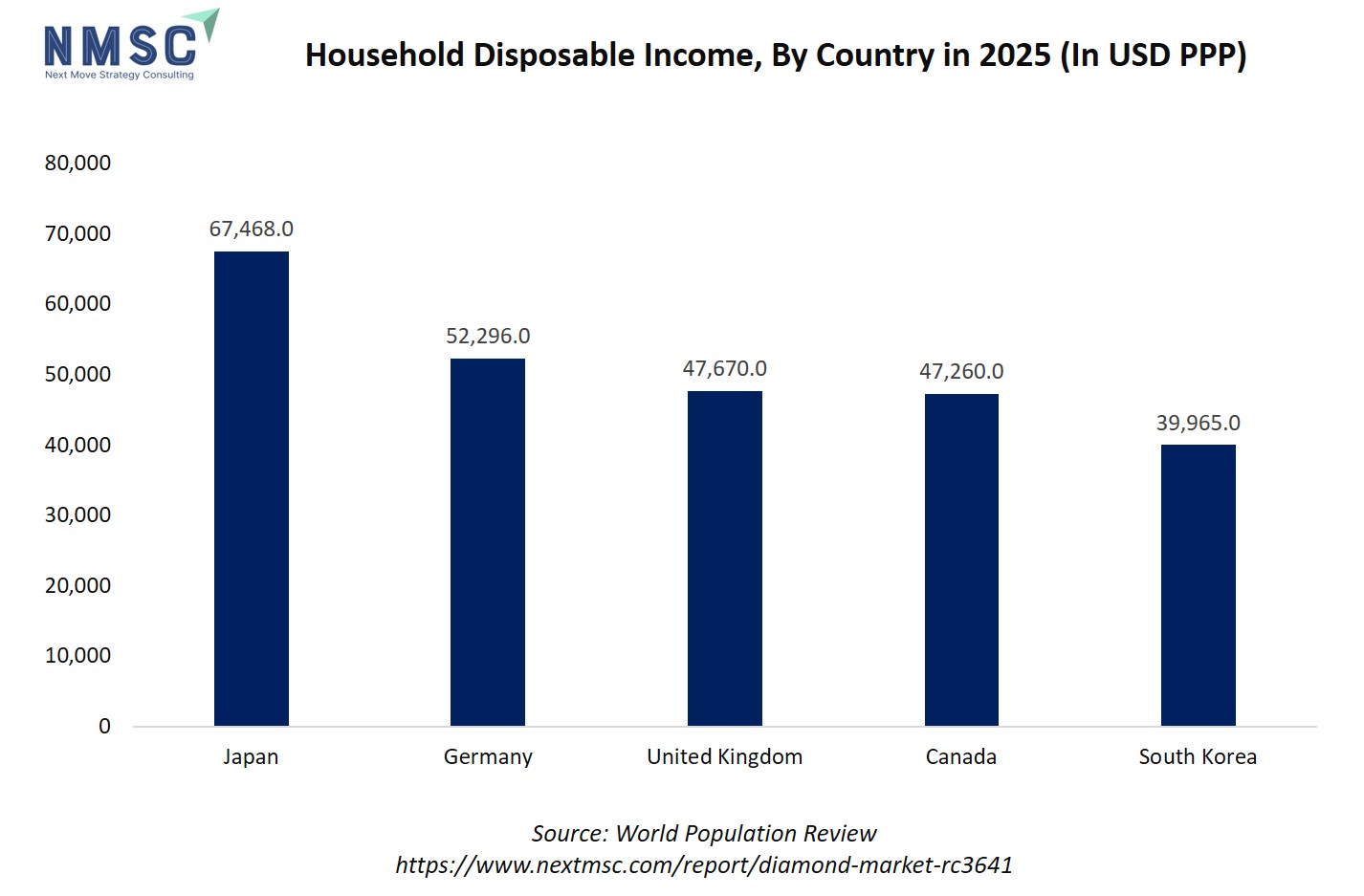
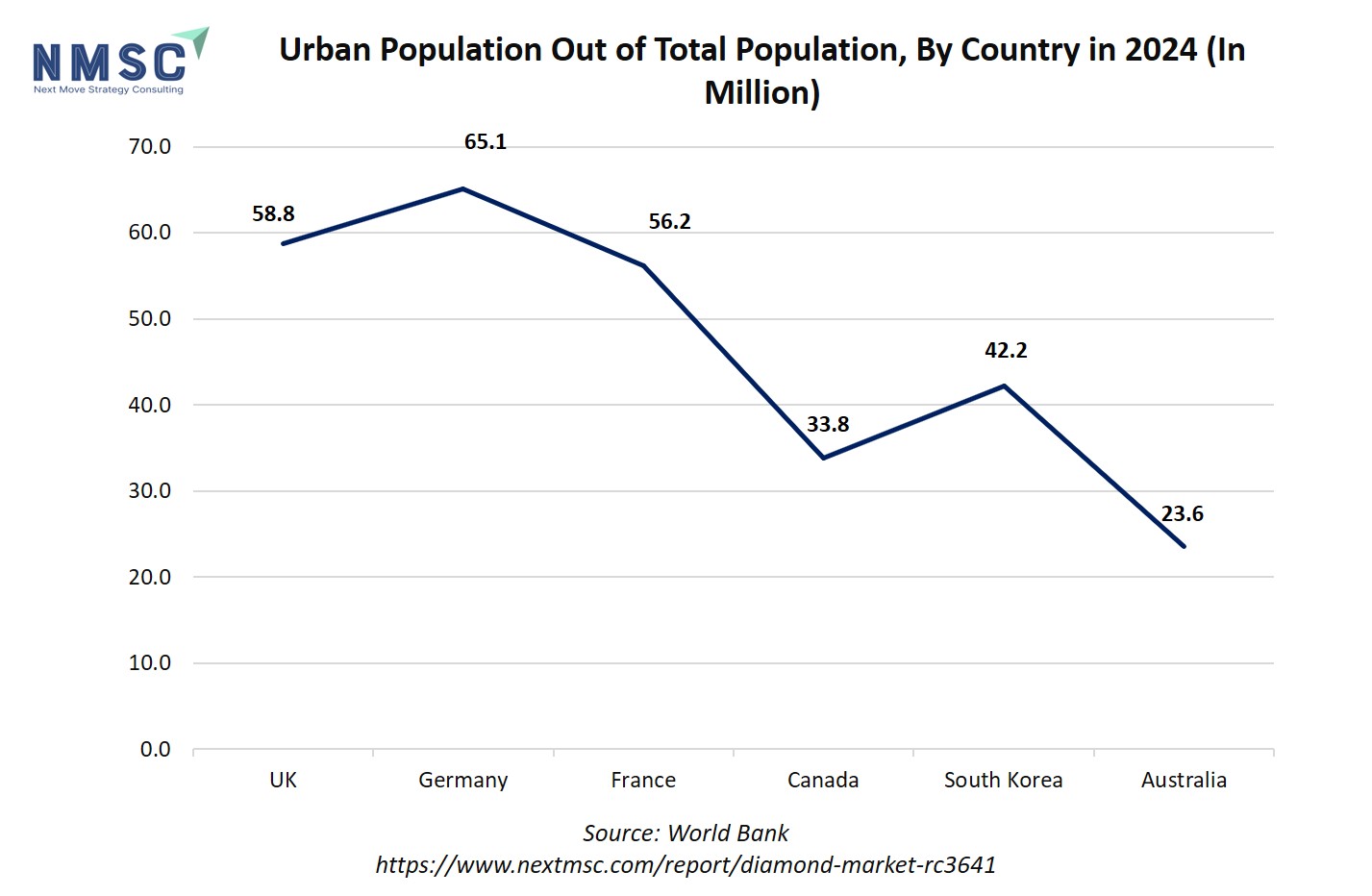
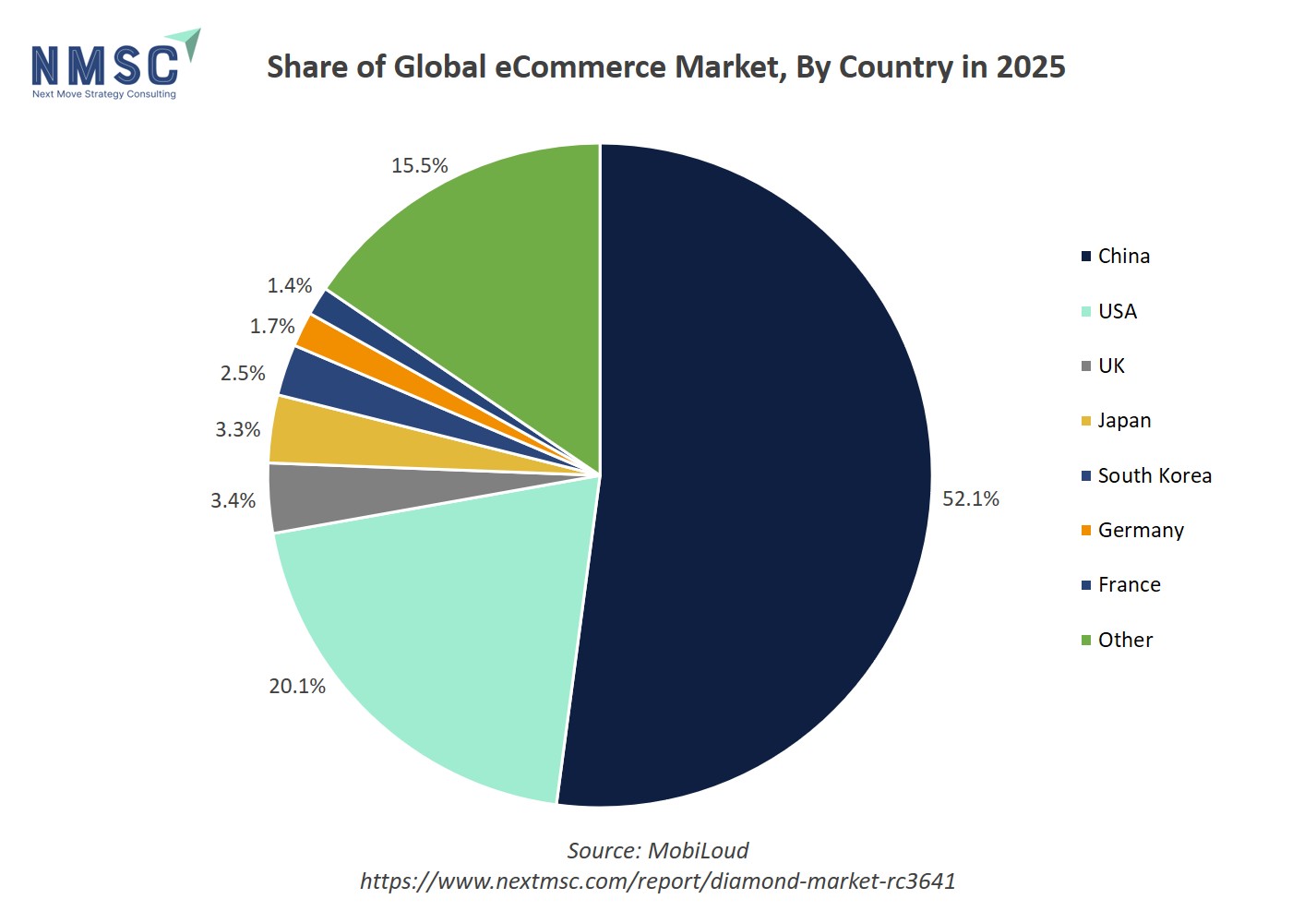

















 Speak to Our Analyst
Speak to Our Analyst



